People often ask ‘Why did Instacart succeed while other similar startups failed?’
The answer lies in the fact that Instacart has learned a lot from the mistakes of failed online grocery businesses that came before it.
Let’s take an example of Webvan.
The team behind Webvan blindly focused on expanding aggressively across the country without proving its business model in its first market. They also invested a lot and ended up owning everything like a warehouse, logistics, etc. This led to a complex infrastructure model which when combined with the wrong target audience segmentation and pricing resulted in a colossal loss.
Instacart does the exact opposite!
Apoorva Mehta (Co-founder, Instacart) said in an interview that – “Instacart makes good money because it owns nothing. No inventory, no delivery vans, and no store whatsoever.” This business model is also well known as the asset-light business model.
Founded in 2012, Instacart has now become a household name across the United States and it is also well recognized in other countries too. If you are planning to start an online grocery delivery business, Instacart could be your driving force.
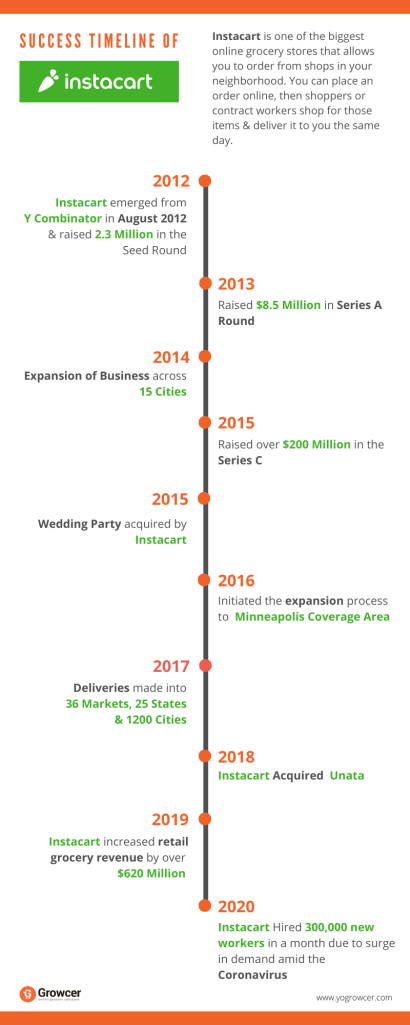
Instacart’s 3-Tiered Customer Strategy
- Instacart partners with multiple stores through a special contract and these partners are known as Retail Partners. They get listed on the platform and showcase their products on the website.
- Instacart hires people (known as shoppers) on a contract basis and these shoppers are further classified into two types:
i) In-store Instacart shoppers: They are employed on a part-time basis and are responsible for preparing the orders for pickup. They do not deliver orders themselves.
ii) Full-service Instacart shoppers: These shoppers are independent contractors who are responsible for shopping and delivering the orders for their customers using the Instacart platform.
- Buyers are the end customers who place the order through the Instacart website or the mobile app. They can add items to the cart from multiple stores. They also have the leverage to choose for home delivery or a self-pickup option.
Instacart’s Business Model – How does it work?
Instacart’s business model is a combination of the following:
- Gig-economy
- eCommerce
- Subscription
- Aggregated business model
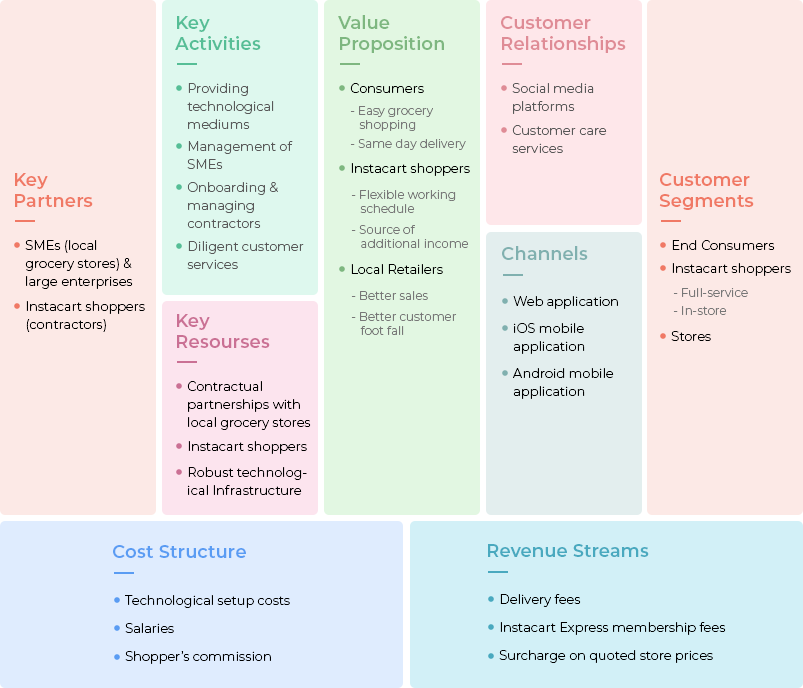
How Instacart Grocery Delivery Works?
Following are the steps explaining the working of Instacart:
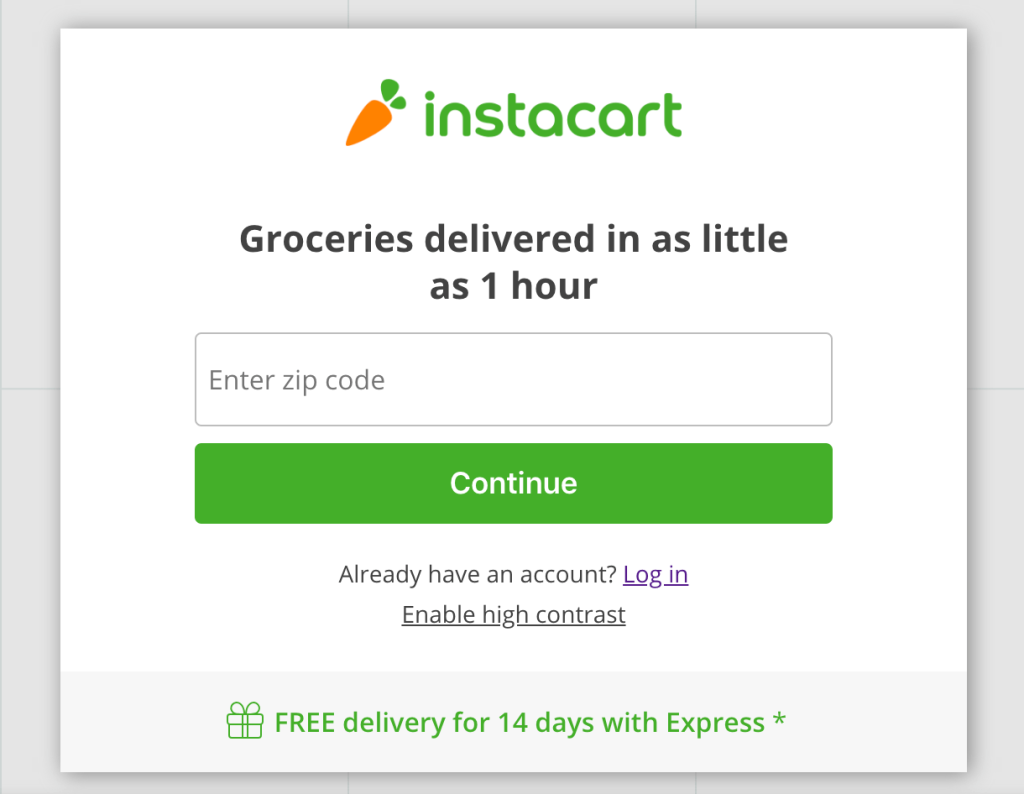
1. The user either manually enters their address or allows the location access from their device to Instacart. Based on the location, Instacart shows the nearby stores for online grocery shopping.
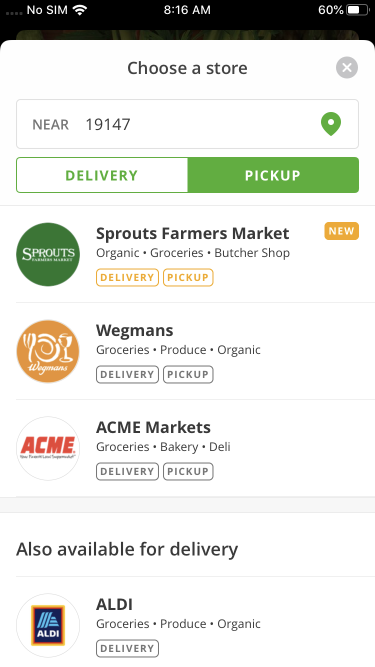
2. After selecting the store, the user can choose from a wide range of items, select the time and date for delivery, and eventually makes the payment.
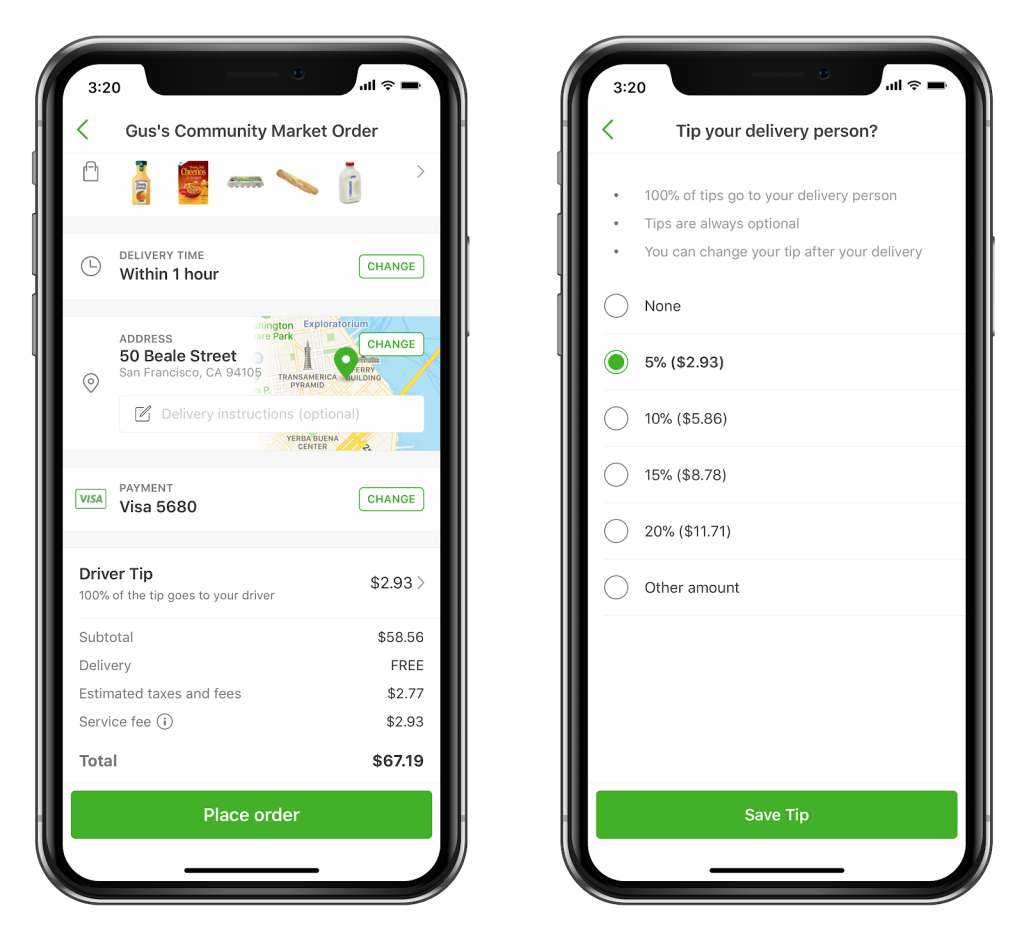
3. Once the order is placed by the user, a shopper will be allotted who then purchase the items and prepare the final order for delivery.
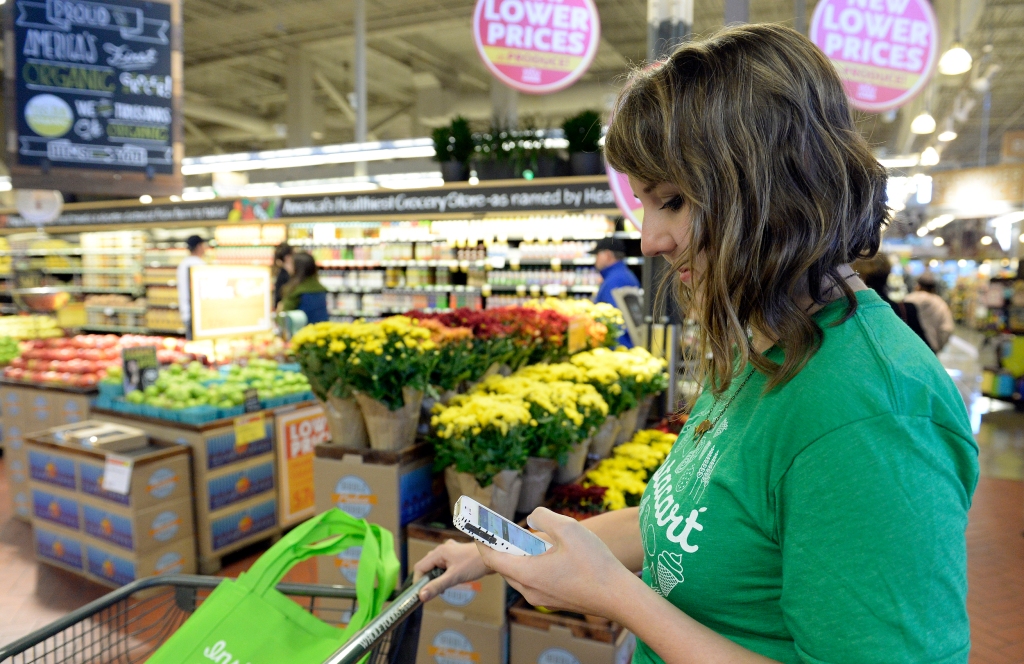
4. The payment will be initiated by the shopper. They use a prepaid debit card issued by Instacart. And finally the order is delivered!
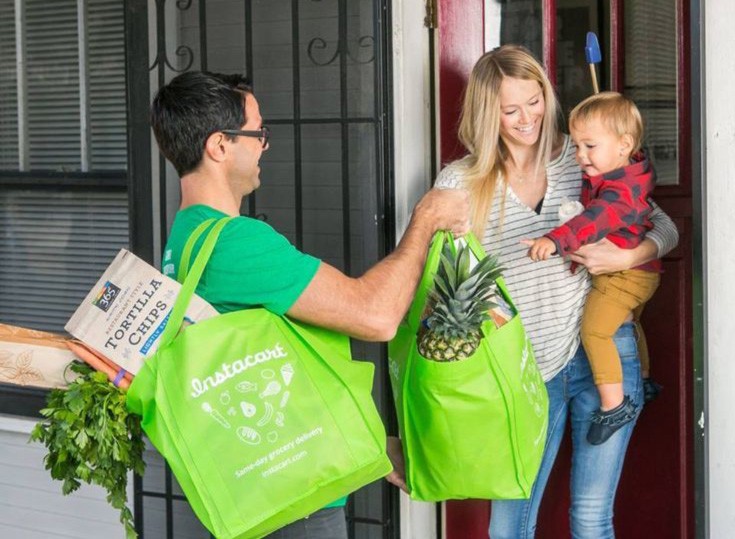
The user can also opt for a self pick-up option for his convenience.
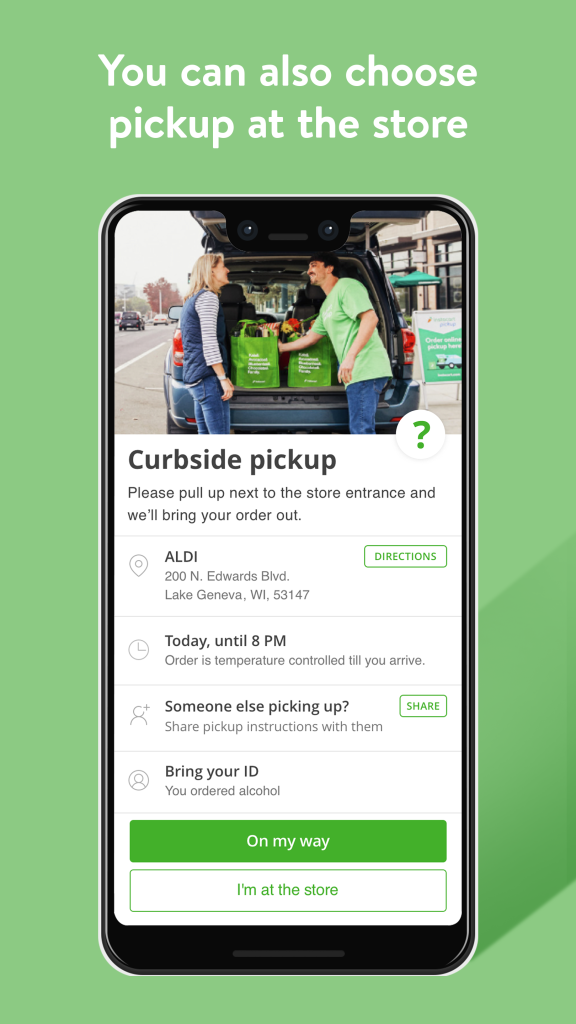
Instacart’s Revenue Model – How does it make money?
Instacart has multiple revenue streams and they are,
- Delivery Fee: Instacart charges some amount as a delivery fee depending on the order placed. Though, the first order is free.
- Partner Payments: Instacart charges a partnership fee from the listed retail stores.
- Markup Fee: Instacart earns a markup fee priced at 20% of the net cost of the item.
- Service Fee: Instacart charges a compulsory service fee of 5% on every order.
- Shopper Tip: The customers have to pay a mandatory 5% shopper tip for every delivery.
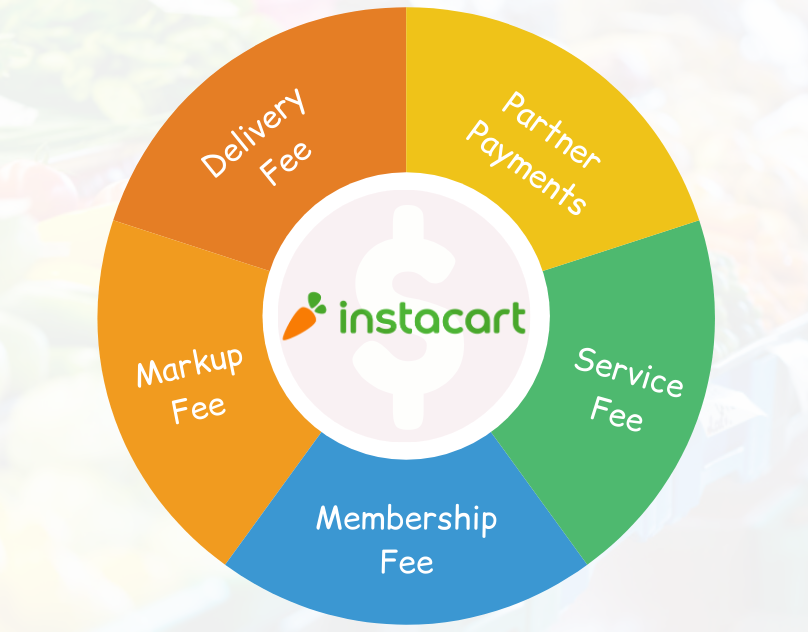
Conclusion
The year 2020 is considered to be a profitable year to start an e-Grocery business. The impact of Coronavirus on the Grocery Industry is exceptional.
The Instacart business model is tightly tied with its operations, providing more value proposition to customers. Also, it provides ample space and flexibility to grow in different segments.
If you are planning to invest in the online grocery sector, you can think of something similar.
For more details, you can contact us at www.yogrowcer.com
Content Source: https://www.fatbit.com/fab/build-grocery-delivery-app-like-instacart/

